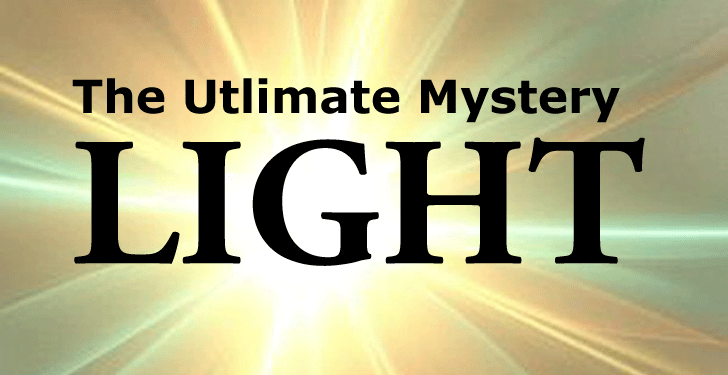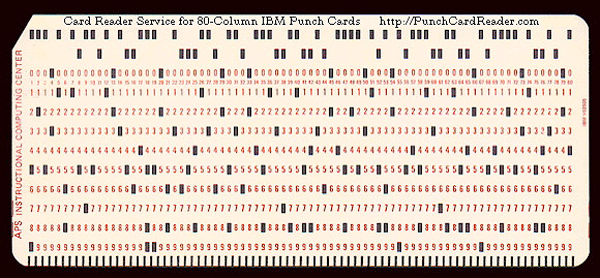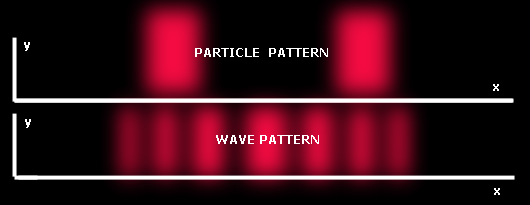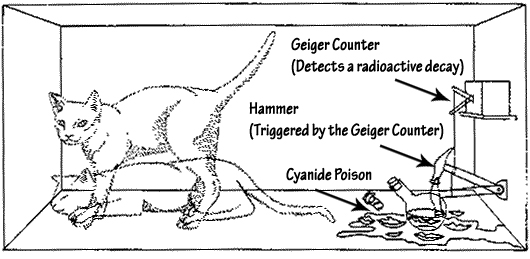

The Present and The Past: Causality
Perhaps the weirdest things that happen in the quantum world -- the world of very small particles of matter and energy -- is that time often seems to be either meaningless, or it travels in the opposite direction. There are several excellent examples of this, like Schrodinger's Cat (which I will discuss later) but this is one that I think best illustrates the reverse time phenomenon.
The Punch Card Problem
A team of scientist design the Double Split Experiment using singe photons which are eventually collected on a detector screen. Aside each slit there is a detector which can determine which slit the photon went through. The detectors are connected to a computer that makes note of the trial number (0001 to 1000) and the slit (left or right) and immediately creates an old IBM punch card with this information encoded on it. The data is then erased from the computer memory.

When the photon eventually hits the back detector screen, the x,y coordinates are picked up and sent to the computer, along with the trial number, and a different IBM punch card is printed with this information encoded on it. The data is then erased from the computer.
So far, no human has seen the cards or monitored the computer. When 1000 trials are completed the two stacks of 1000 IBM punch cards are locked away for 50 years.
Remember: the photon will always have a wave pattern unless the slit that it went through is known by a conscious mind. Even if detectors are used, if the information is not observed by a conscious mind then it remains in wave form.
After decades the box is opened. The stack of cards containing the trial numbers and the slit that detected the photon are shuffled in the dark, then half of the cards are removed randomly and burned.
When the cards are sorted, those of the same trial numbers are put in one pile and those who do not have a corresponding trial number (because their mate was burned) are in the remaining pile.
We know from the Double Slit Experiment that a particle will create two fuzzy rectangles while a wave form will create several fizzy bands. We can determine the x,y coordinates of these rectangles by letting photons enter through one, then the other slit (one slit at a time). When the IBM punch cards are examined for the x,y coordinates it is possible to say that the coordinates are either within the rectangle (a particle pattern) or fall outside of it (a wave pattern).

We also know from the Double Slit Experiment that if a human mind (consciousness) is aware of which slit the photon went through then the resulting pattern will be that of a particle.
Quantum mechanics therefore predicts that the cards with matching trial numbers will all fall within the two fuzzy rectangles of a particle pattern, since we have now consciously detected which slit the photon passed through. Because the cards that were destroyed no longer contained the information on which slit the photon passed through, the result is that we never observed this information and so the expected pattern will be that of a wave.
What has happened here is that a random decision (which cards to burn) made in the present has caused a photon 50 years in the past to decide to be in the form of a wave or a particle.
Or, from the perspective of the photon, it has seen what will happen in 50 years in the future and has decided to take the form of a wave or a particle. This is the weirdness of the quantum world of light.
I've gone to sleep many mights trying to imagine a way to use this reverse-time phenomenon... if there was a way to send lotto numbers back in time. After all I only need one day of reverse-time communication -- not 50 years. But the logic does not yet allow for such things. Or does it?
In the above example, two events (the slit information and observation 50 years in the future) are entangled. In the famous experiment below, the decay of an atom is entangled with a cat.
Schrodinger's Cat -- Observation By An Animal?
In the standard model of how stuff is made, commonly called the Copenhagen Interpretation, an atom like uranium would be considered as both having decayed and not decayed -- two superimposed states -- until it was actually observed by someone. This is analogous to a photon being both a wave and a particle until observed.
While this dual-state mathematical condition exists in the quantum world, it makes no sense in the larger world where we exist. Schrodinger's Cat is a thought experiment, sometimes described as a paradox, devised by Austrian physicist Erwin Schrodinger in 1935 to illustrate how absurd the quantum world can be.
We begin with an atom that is capable of radiation, like uranium. Uranium atoms have so many electrons that the ones in their outer shell, furthest from the pull of the nucleus, tend to escape and fly off in space. A geiger-counter is designed to detect this escaping electron and produce a "click".
While we know about how many "clicks" we will detect with a good size chunk of uranium, we have no idea when a single atom of uranium will shed an electron. It could be the next second or many years from now. But we are confident that, eventually, this will happen.

In Schrodinger's thought experiment a single atom of uranium is placed in a glass jar with a geiger counter. Instead of just making a "click" when it detects the flying electron, the geiger counter also breaks open a tablet of cyanide gas... Oh, yes. We're going to put this whole contraption inside a metal box that also contains a live cat, close it and wait.
After some time has passed we might wonder if the uranium decayed and ultimately killed the cat, or perhaps that has not happened yet and the cat is doing fine. Schrodinger was trying to show that, according to the rules set by the Copenhagen Interpretation, until you open up the box and look, the cat can exist in two states: dead and alive. His argument was that the cat's fate would not be "real" until an observer looked at it, which is of course quite absurd.
In our rational world, the cat is either dead or alive, not both. Of course, the cat knowns if it is dead or alive -- doesn't that count as an observation? It's crazy, but such things exist in the quantum world.
Here's a brief video that explains the paradox.
Comments:
